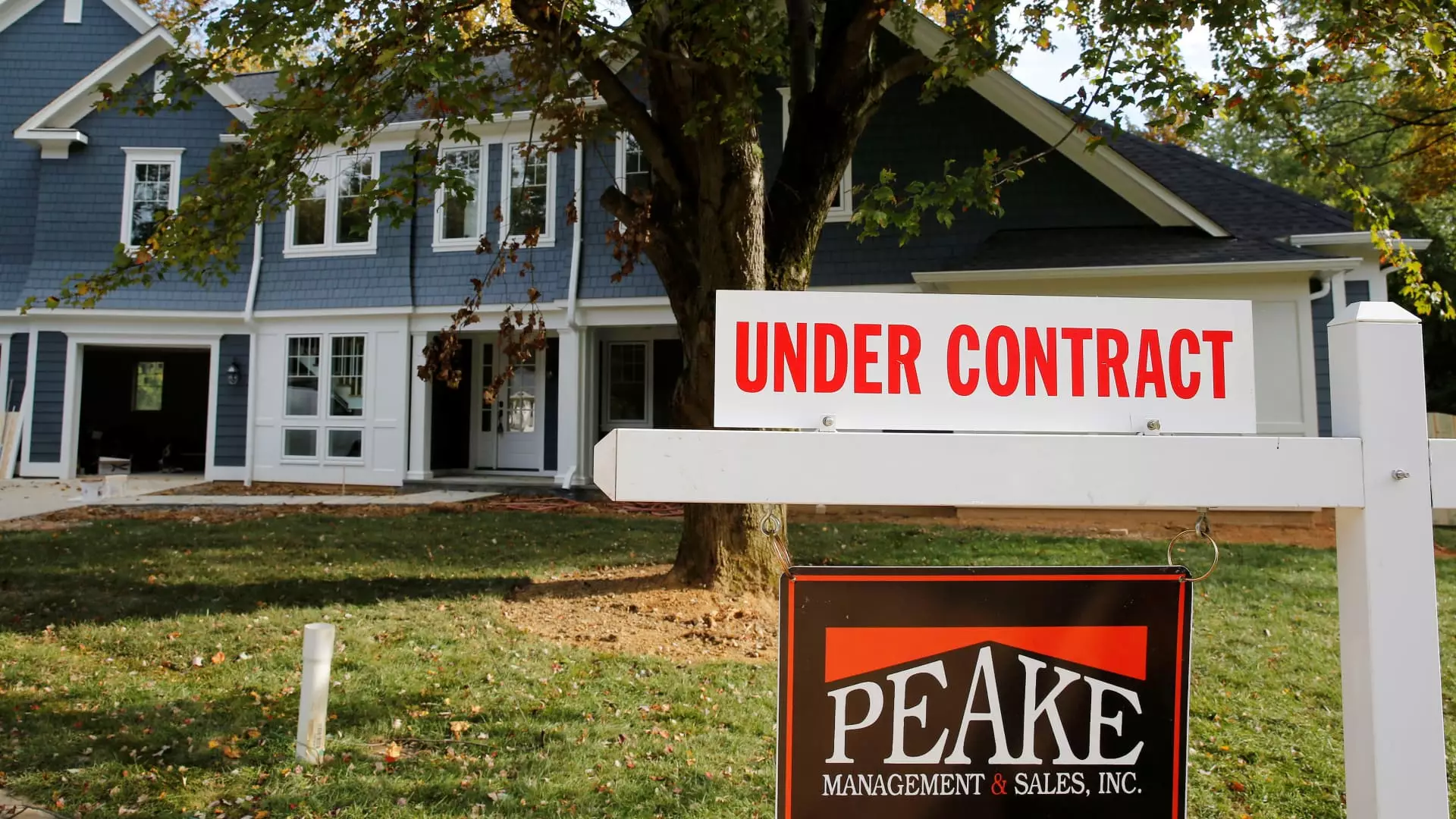Recent data from the National Association of Realtors revealed an astonishing 7.4% rise in signed contracts to purchase existing homes in September compared to August. This figure contradicted analysts’ forecasts, which anticipated a modest increase of only 1%. Notably, the surge in pending sales marked the highest level since March and showed a 2.6% year-over-year increase from September of the previous year. This statistic is particularly striking as pending sales serve as the most current gauge of buyer sentiment and demand. They are indicative of market conditions, allowing us to infer the factors influencing prospective homebuyers.
Central to understanding the uptick in home sales is the fluctuation of mortgage rates, which play a crucial role in buyer behavior. Throughout August, the average rate for a 30-year fixed mortgage steadily declined, hitting a low of 6.11% by September 11, according to Mortgage News Daily. This decrease likely incentivized buyers, who rushed to lock in lower rates before an anticipated rise. Unfortunately, by October, the average rate climbed back over the 7% mark, posing significant challenges for affordability and likely cooling the momentum built in September.
When examining the regional data, it becomes evident that the rise in pending sales was not uniform across the country. It was most pronounced in the West, where buyers felt the effects of higher home prices more acutely and stood to gain from even minor decreases in mortgage rates. Conversely, the Northeast and West also experienced year-over-year gains, while the Midwest and South remained relatively stable. This regional disparity highlights how individual local markets respond differently to broader economic trends, influenced by local economic conditions and housing inventory.
The outlook following this surge raises questions about sustainability. Economists are cautiously optimistic, with Lawrence Yun, chief economist for the Realtors, suggesting that further increases could occur if job growth continues, inventory expands, and mortgage rates stabilize. However, Selma Hepp, chief economist at CoreLogic, paints a more tempered picture, cautioning that with mortgage rates again approaching 7%, the recent rebound in pending sales may be short-lived. This forecast suggests that despite a momentary increase in activity, overarching economic pressures may inhibit housing market recovery in the longer term.
Interestingly, despite the rising rates, mortgage demand has seen an uptick, reportedly 10% higher weekly compared to the same period last year, as per the Mortgage Bankers Association. However, it is crucial to consider that these levels of demand remain described as historically low. While immediate gains in pending sales signal some revitalization in the market, experts maintain that these trends must be examined within the context of long-standing affordability challenges and shifting economic conditions.
While the September surge in pending home sales appears to reflect positive buyer sentiment driven by temporary mortgage rate declines, the broader implications for future market activity remain uncertain, necessitating close monitoring of both economic indicators and buyer behavior.

